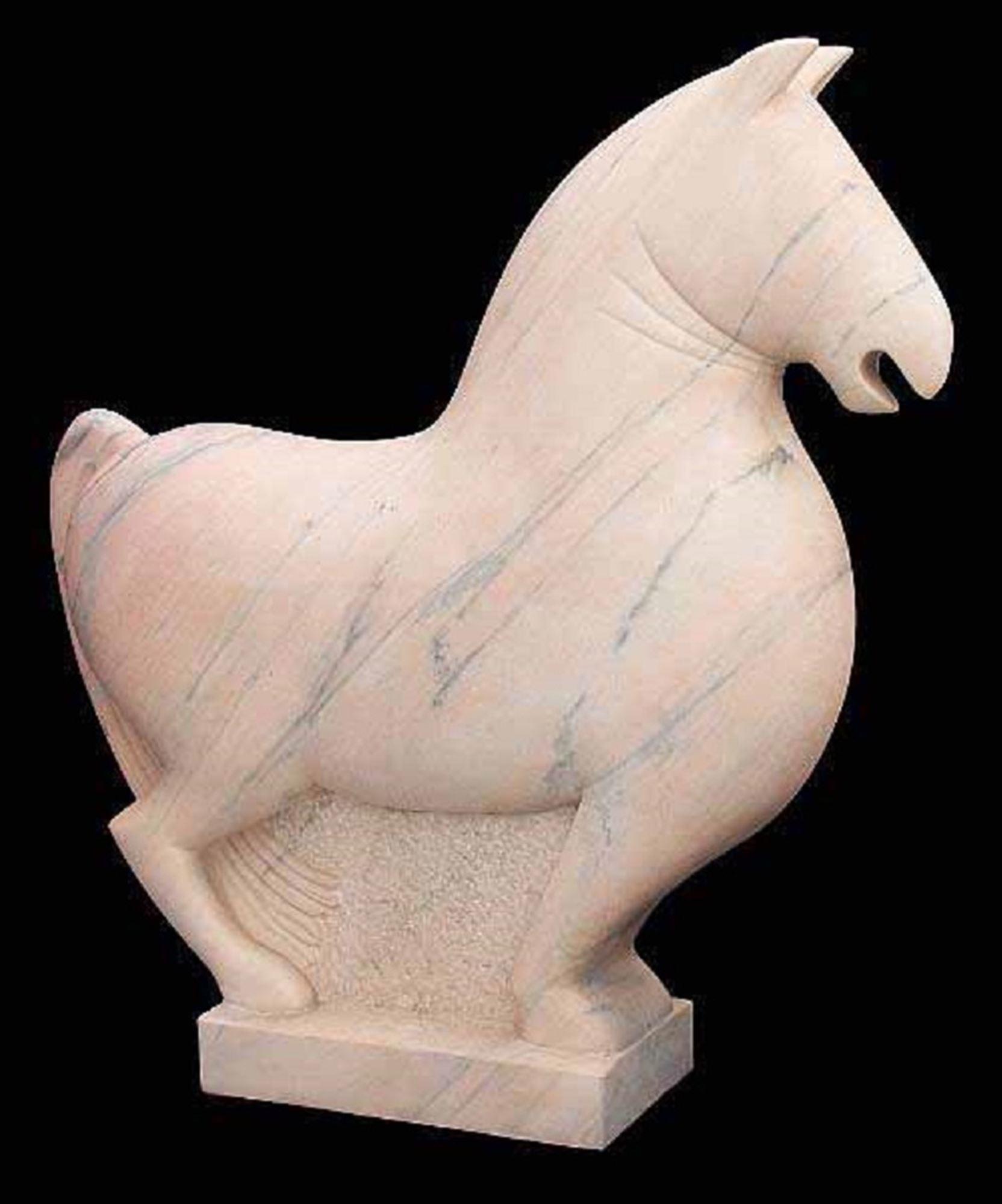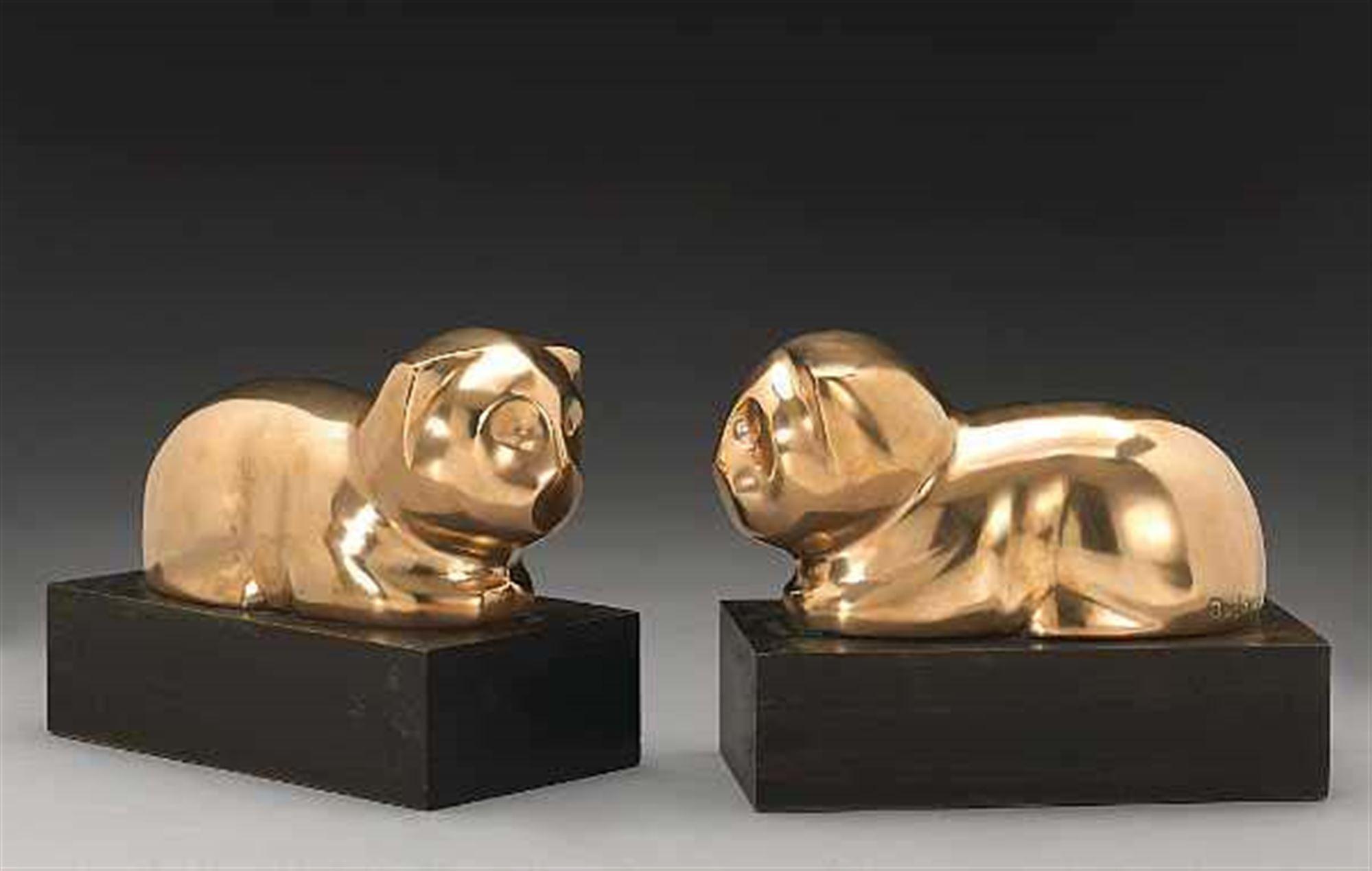Born in Italy, Bufano immigrated to the United States as a child. After winning a scholarship in 1913 to study at the Art Students League, the young artist went to San Francisco as Paul Manship’s assistant, in order to supervise the installation of Manship’s figures at the Panama Pacific Exposition (1915). Bufano spent the next few years traveling abroad (Europe, India and Asia) with a concentration on the study on Asian ceramics which resulted in a period of work at various pottery centers in China.
By 1921 he had returned to California and began teaching at San Francisco Institute of Art but was dismissed two years later for his progressive teaching methods. However, his fame as an artist grew as he began making large scale stoneware sculptures. He employed the same technique he had learned during his travels in China but added his own intense glazed colors and a refined stylization of surface.
Bufano received many commissions and these reflect his ceaseless experimentation with material (stainless steel, cast stone, mosaic and precious stones) and his affinity for large and monumental scale.
In the early 1930’s and 1940’s he worked on a series of animal figures which incorporated the same stylized and refined surfaces that he learnt from his apprenticeship with Manship. Bufano’s images are less figural and more abstract than his mentor’s. In the early 1940’s the artist received a large commission from the WPA for many animals to be placed around the public garden in the Bay Area (now re-located to the Randall Museum, San Francisco). Another garden commission came from John Hopkins University for a group of animals to decorate a children’s park on their Baltimore campus.








